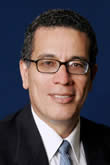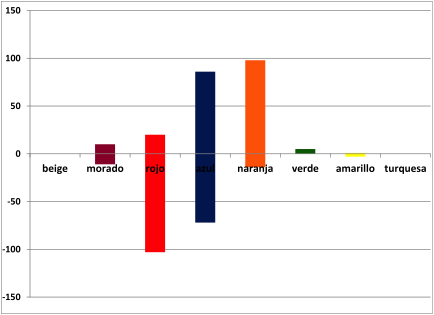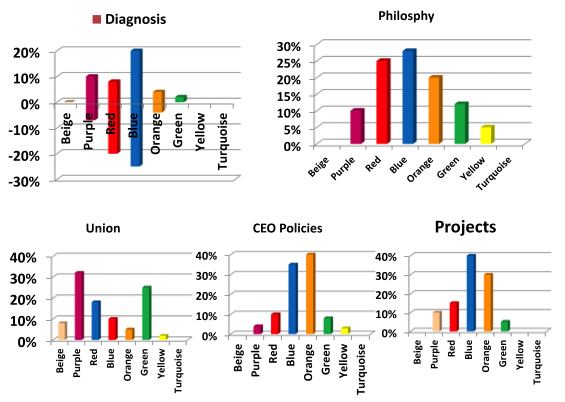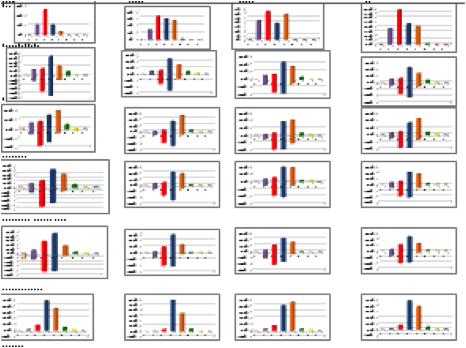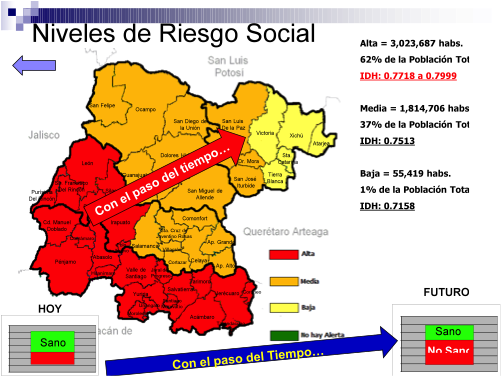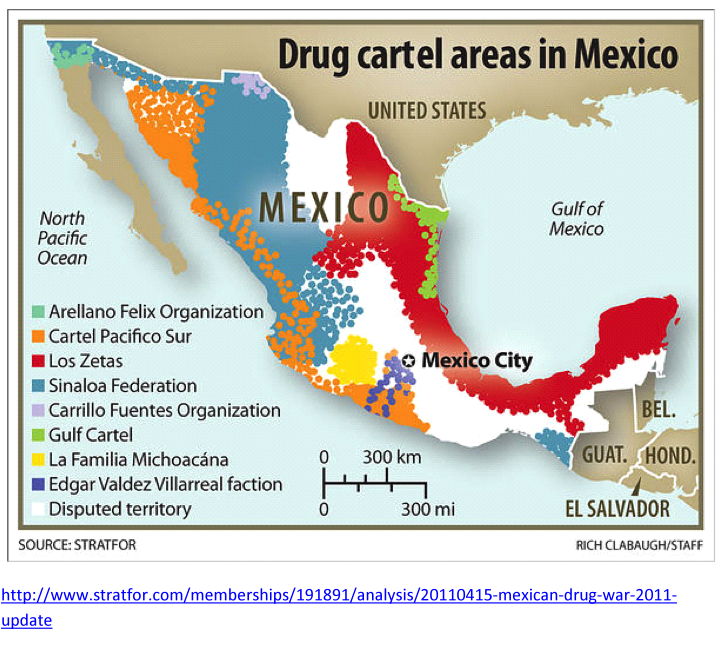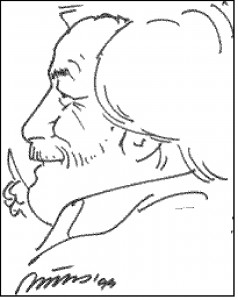Russ Volckmann
Russ: Roberto, we have been in communication for several years and much of it has been in relation to the work you have done with Don Beck in Mexico. For example, one of the things that you have written about is the work that you have done with the Department of Education and the Teachers’ Union. Can you tell us about the status of that project?
Roberto: Sure. Well, it’s not really good news. When we got close to the Minister of Education, along with Dr. Beck, we met for the first time with Union members and executives from the Ministry of Education. We were working to design the future of education. We met twice in 2007 and 2008. Unfortunately, the Minister of Education became a legislator. In fact she is running now for the Presidency in 2012.
Russ: A big shift!
Roberto: Of course, she first needs to win the nomination. After that she could be a formal candidate for the presidency. Actually, she is doing pretty well.
Well, the fact is that when she resigned from the Ministry a new Minister of Education came who did not know what we were doing. He came along with his team. So the key people that we had good relations with were moved to other places. The new ones decided to continue what we have been doing, but we had to start over again. It took us about a year and a half, maybe two years, to open this door again and get access through the Human Resources Department. So we are not in as good a position as before, but at least we have a door open. We are preparing a proposal to do a pilot project. Before, we were working on a project for the whole country. Now we are talking about a pilot project that hopefully could begin before this year ends.
Russ: Good luck with that. Could you give us a sense of what the pilot project is about?
Roberto: Yes. The Teachers’ Union is the largest union in Mexico, as well as the largest union in Latin America. They have about one million and five hundred thousand members. Out of that, 300,000 are not teachers. They are personnel who support education: IT experts, clerks, janitors, secretaries, even researchers in education are among this group. This is a very diverse group. The members of the Teachers Union who we are in contact with express the idea that first this group of 300,000 people should receive proper training to update their skills. They also stress the need to do research on values systems, so the project will include training 120 people who will help us as a change agents. They will gather information to create profiles using Spiral Dynamics in order to have a better idea of the values systems of this sample population. After that we will use this information to design the training programs.
Russ: Would you anticipate that essentially you are going to find a range from purple to entering orange?
Roberto: Yes, you are right. Because of the big gap that there is in the profiles of these people—maybe a janitor in the same group as a researcher—we could expect that kind of distribution, from purple to orange or maybe some traces of green.
Russ: Once you have that profile, what happens then?
Roberto: In Mexico the group at the Center for Human Emergence has developed a different way to draw the profile of Spiral Dynamics, because we are able to differentiate the healthy and unhealthy manifestations of the levels. I want to show you an example of how we do this.
If we find unhealthy manifestations of the stages in the profiles the first thing we need to focus on is actions and initiative projects that could transform the unhealthy manifestations to healthy ones, you see?
Russ: What would be an example of an intervention that would address, let’s say, unhealthy blue?
Roberto: Well, unhealthy blue can be derived from very different reasons. that why I mentioned to you I’m going to share my screen to show you something.
The unhealthy blue that I am showing you, you can see here below the 0 in the center of the vertical scale.
Russ: Right.
Roberto: This graph is from a real project in a national company in the north of the country. When we see this unhealthy manifestation of blue, we know what elements have built this blue bar. So we can derive what we could call a grounded theory to explain why that is happening. If we derive this grounded theory we will be able to identify the kind of actions to relieve the system of these unhealthy manifestations. Following the principle that the level of the spiral transcends and includes the previous levels, the way we approach these challenges is first by attending to the unhealthy purple, then the unhealthy red and then the unhealthy blue. Sometimes, when you attend to the unhealthy purple some of the unhealthy blue and red fix themselves and influences the whole Spiral.
This unhealthy manifestation with purple is somehow contaminating downstream red, blue and orange. You can see that orange in this case has some unhealthy manifestations.
Russ: What would be an example of unhealthy purple?
Roberto: A pretty common situation that happens in organizations would be that when people in a meeting behave in one way and then after the meeting they just start gossiping and saying bad things about what happened in the meeting. They are destroying the good mood or good purpose of a meeting and destroying also the morale of the group.
And look what follows in the image that I’m showing you.
Here we have the philosophy of the organization, its mission, vision, values, quality policy and whatever. On the upper right you can see what is intended for the organization and on the left what is the reality of the organization.
You can compare, for instance, purple in reality and the purple intended by the Director and the Board of Directors in the right of the graphic (Philosophy). We can identify the gaps on each value system: purple, red, blue, orange, even green! Do you can see how big is the green here?
Russ: Yes.
Roberto: What they desire is almost 12% while what shows at about one or two or 3% at the most. We can address the gap with action and initiatives. If we define actions for each level, we must be sure that the actions are aligned and are see logistically interacting in order to improve.
Also, you can see that the CEO Policies have gaps if you compare this with the philosophy. The philosophy was defined before the present CEO arrived, so he had an opportunity to decide if he would adjust his policies, his driving forces for the organization. He needs to adjust his policies or to adjust the philosophy to his policies. Moreover, when we asked them what about the projects that were already in place running to improve the company or the organization, they gave us the information. We did a similar analysis. We graphed these projects using the spiral dynamics approach. You can see the inconsistency between the initiatives and the general policies, as well as the philosophy of the institution.
In the left lower corner you will see this is in relation to the union. The union also has an SD profile. There is a lot of inconsistencies compared to the organization.
So the way we manage this is that after the diagnosis we ask the CEO to gather with the managers who are closest to the CEO. In this case we are talking about 15 people. We will meet with them next month, first to explain to them the basics of the Spiral Dynamics model and second to show them the results of the diagnosis. Third, we will work with them to design alignment activities, not only from our consultant’s perspective, but also by drawing on their experience and their involvement in the change process.
So this is the first step of diagnosis that we did last April in this company. With the Ministry of Education it will be similar. That will happen in September or October.
Russ: Have you done this type of project using this kind of data with organizations before this?
Roberto: Yes. The first one we did was in 2008. It was very interesting because it was with a union, but a union of businessmen.
Russ: So they are more like a professional association?
Roberto: Yes, it’s like a professional association, but they are defined and they are registered officially as a union of businessmen. We did something similar with them but we had only the first graph. We hadn’t come up with the idea to graph using this parallel dynamic concept: the philosophy, the projects, the policies. So what I am showing you is the first time that we did this in a way that helped us to address the gaps between different segments of the organization using the model of Spiral Dynamics.
Russ: What kind of response have you gotten to this data?
Roberto: I have shown this exact data to the CEO and his right hand man. They both were amazed at the way we could translate from qualitative to quantitative information and how easy is to use this information in order to identify change projects. Let me show you something additional regarding this project, a lot of small spiral graphs.
This graph focuses on all of the questions. We asked several questions (rows) to different groups (columns). Here we see group one, group two and group three. Group one is union people, group two is middle managers and group three is the people who report to the CEO. When we asked these people about what they perceive are the goals of the organization we can see what the union people, the middle manager and the higher directors said. We can see in a glance that they have different profiles. Here I have collapsed the three graphs into a single one. (First column)
When we study these groups, we start to find some gaps. What the directors are saying to the organization about these goals and what the middle managers understand are different things. What the union people understand is also different. Graphs like this provide plenty of information to review with the Directors in order to validate what kind of projects they should focus on in order to align the organization.
Russ: So that represents the kind of work that you are doing with clients in Mexico. Much of it is very innovative and it looks like it has really high potential. That’s very exciting. Are there other projects that you have been working on using Spiral Dynamics?
Roberto: Yes, of course. I remember a project that we did in 2009. Let me show you because this is also very interesting. This material that I’m going to show you Dr. Don Beck asked me to present in Dallas at the SDi Confab and also in Chile through Skype. This work gave us the opportunity to design what we call a social risk index.
This was a study for the government. They asked us to do a feasibility study for an after school project. They wanted to support the children after school, so they asked us to explore if there were a potential market for places in the neighborhoods where students could go and find some teachers or mentors that would help them with their homework, to learn English, to learn computing and whatever.
We collected information in the whole state with its forty-six counties. We visited all the counties and interviewed teachers, parents, businessmen and students. We discovered that mainly the parents and teachers were concerned, not about the quality of education, but about the dangers of the cities, of the gangs, of the drugs and those kinds of things. We decided to do a collateral study using the spiral to see what is unhealthy in the state. For instance, beige lack of money—the families recognize that they have a big of problem with money because, for instance, in some parts of the state a principal of a rural school told us that about 70 to 80% of the children in the classroom have no father at home, because the father went to the United States to work.
Many times they don’t receive any money from the father, because they don’t have contact with him. Often they don’t know if the father is alive or died in his attempt to go to the United States. They are very poor, so the children start working. The mother asks the children to work to get money for the family. Many don’t have jobs. They don’t have food. They don’t have good nutrition. So when you look at purple, the families are dysfunctional and disintegrated. The children don’t have the support of the family for studying. There is a lot of fighting inside of the family. They are not interested in studying. So these are examples of what we found.
This is the profile the whole State. The total manifestation of healthy and unhealthy stages are shown. As you see, they are mostly healthy (green) and a minor part is unhealthy (red).
Note: In this case red and green has no relation with the SD meaning.
We processed this information for regions and sub-regions. This includes the population of the State’s almost five million inhabitants. I live in the most populated region. We did an analysis for each sub-region and region, but I am going to move to the end to show you the final map.
We designed a criteria to show in which part of the State we have high risks, such as crime, gangs wars, etc. Where red is high we have a high level of social risk—there are high activities of drug dealers, gun traffic and that kind of thing. The medium risk is orange. Yellow indicates low risk and Green no social risk
Here is the graph that shows the healthy and unhealthy proportions of today (bottom left) and what the people expect for the future (bottom right)
Russ: Wow!
Roberto: So our hypothesis was that with the passage of time red will expand and push back the orange and the yellow and so on. And—unfortunately—that is happening! Below the red area is the State of Michoacán, which is one of the most active States of drug dealers. In fact, I live in that red region (Leon)
Here you can see a graph elaborated by Stratfor Global Intelligence agency.
Michoacán is where the Knight Templers drug gang is. The white area corresponds to undisputed territory. So that also corresponds to our study that gradually we are going to have more problems here in the State because we are in the middle of La Familia and Los Zetas. So my State is mostly white in this graph and also you can see my graph also put in red a part where there is starting to emerge these kind of risks
This is what we have done. Here in the graph you can see this letters “IDH.” In English that is the Human Development Index. It is calculated by the United Nations. You can see that where we have the highest population we also have the highest human development index. When we have very low population we have a lower human development index. We ran a correlation using Excel. On the horizontal axis you can see the Human Development Index and in the vertical axis we graph our index, the social risk index.
We have a pretty good correlation (R2=0.7019). The higher the Human Development Index the higher the social risk index. What this tells us is that the Human Development Index is not considering other collateral effects of the so called “development”. The United Nations considered longevity, how old is the population, the education level and also the GNP per capita. But what is happening is that when you have more income for drug dealers that city becomes more attractive because the population has more money to pay for drugs.
So that’s what is happening in the case of the Northern Mexico. Where the problem is really high is here in Nuevo Leon. It is considered the only State that performs like a first world area. It’s a first world state in a third world country you know? So many of the problems that we are having at this moment are in this area. But my hypothesis is that the problems in Nuevo Leon are more related to the border because this is one of the places to bring in the guns and export the drugs.
Russ: I’m noticing that on the border of Sonora that it’s white and that’s indicating it’s in contest is that right?
Roberto: Yes, that’s right. When an area is a color there are problems, but different problems than where there is white. When an area is white what happens is that the gangs start fighting each other in order to control the area. In the case of Nuevo Leon the fight is not among or between gangs, but between the army or the marines against the gangs. So these are two kinds of projects that we have been doing in the last few years.
Russ: What concerns do you have about doing this work in Mexico at this time? Are you concerned personally for your safety?
Roberto: Yes, of course! There is actual or implicit danger any time you get involved in this kind of project. But also there dangers if we do nothing. The way we handle this is through our faith to God. I personally have a strong faith that God will take care of me and also the people who work with me.
Russ: Are there people in the government who are paying attention to this work that you are doing?
Roberto: That’s another good question. For instance, in the study that we did for the government, the feasibility for an after school program, when we showed them this graph that shows the risk for the State, since they are not the agency interested in the security of the State, they showed low interest. After trying to knock on a lot of doors in the government agencies or ministries since 2007, by the end of 2010 I decided to focus my efforts mainly in the society, NGOs and businessmen. So I have found very good response from businessmen who have decided to do something for Mexico.
So that’s very interesting, because Dr. Beck showed me who were the hidden heroes in South Africa—the business men. The business men in South Africa played an important role. Many of them stayed in the country despite the fact that the country was very close to a civil war. If they stayed in the country, their company stayed in the country and they kept generating jobs. Dr. Beck advised me get close to the businessmen, because they have the mind to understand this kind of project. They have an orange mind and they have the money that can support a project like this. Also they have the connections with other businessmen, with NGOs, foundations. Some of them have foundations and also they have access to new technology. People in the government, in high levels of the government, listen to businessmen more than to an activist like Dr. Beck or like me. Some people in government could think we are crazy.
Russ: Is there anything that people outside of Mexico can do to support the work you are doing?
Roberto: Well, one way that I appreciate a lot and maybe most that I can explain is the kind of information that you sent me this morning and that Elza Maalouf, Dr. Beck and others have sent. The kind of information that describes how the other countries are seeing Mexico is very valuable. Another way is that maybe there are foundations or organizations in the world that I don’t know about that could support us and that could fund us in order to continue these studies in more states of Mexico and to continue gathering information, because we don’t have that kind of support here. This kind of information will be very valuable to convince more Mexicans to act in an orchestrated way to build better futures for Mexico.
Russ: What about United States policy toward Mexico?
Roberto: Yes, regarding two important aspects. One of them is the law on immigration for the people who go to the United States. Mexicans realize and are aware of the challenges that the United States government has with the drug dealers and consumers inside your own country and also the gun trafficers that move through the states to Mexico. I think those are very key issues. We cannot solve these problems working alone.
The problem is also in Central America, in countries like Colombia or Guatemala where they are harvesting the drugs and then processing them. Gangs in Mexico are processing them and passing them on to the United States. What is happening in our countries is that the consumption of drugs is also increasing. We also have a problem with addiction among young people. But I think that part of the solution is stopping the gun traffic. The drug traffic and immigration are the same problem. If we don’t have job opportunities here in Mexico and if you close the border, the Mexicans who can’t pass into the States also need to feed their children so they will move very fast to work for the gangs. It’s the quickest way to get money, good money, and to work for a different future for their children.
Mexicans can go to work in Canada, if they meet the requirements. They go and work there for six months and then go back to Mexico. But I don’t think that it’s a very difficult system to be designed, because in the States you have very good controls and very good customs in order to know who is coming in, who is coming out, who is going where. The people in the United States need that labor to harvest the tomatoes and whatever.
The United States are expelling the Mexicans or the Hispanics and they are lacking that kind of labor. We could analyze the region including all of the variables—economic, social, political, and technological. Maybe we can assemble a council with the presidents and the congressmen of the five or six countries involved to look for an integral solution. I think that that could really be a jump to the future in a different way; otherwise it will be very difficult and a very long time to fix this kind of problem.
Russ: It seems like the presidents’ past efforts along those lines of taking a more integrated approach that involves multiple countries does not have a very strong history. Frankly, I have not trusted many American administrations to negotiate fairly and in the interests of all; they seem to be dominated by the interests of the military-industrial complex. Perhaps Obama would like to move down that path. He is under so much pressure in terms of international wars and the military, security issues and the economy that it’s very difficult to imagine an effort like that being undertaken in the near future. Maybe somebody will read this interview and we might touch someone who can make a difference.
Roberto: Yes, because if the presidents are not able to be on the same page to fix this kind of problem, the other option that is likely to happen is a matter just of time. The civil society in these countries, for the sake of our own good and a better future for our children, people like me and my team, will find the way to interact and to work together despite the initiatives of the presidents.
Russ: Roberto, we’ve covered a lot of territory. I want you to know that I’m involved in the border action network here in Arizona as well as Me Familia Vota that helps Mexican Americans and other Hispanics to go through the citizenship process so they can vote in the elections. I have friends who put water out in the dessert for immigrants who otherwise might die.
There are lots of things on many different levels that people can do. The reality is that this situation is critical. It is probably one of the most critical issues we have other than overall economic development and the political and social development that goes with it. I hope that anyone reading this will think seriously about not depending on presidents or even the most affluent businessmen but to look at what they themselves can do to try and address this critical issue.
Roberto: Maybe several years ago this kind of interaction between you and me could be almost impossible. The odds that we could meet each other, share our thoughts and look for support for each other it would be almost impossible. But now social media is playing a major role in the future, because more people like you and me will be connected despite the distance or the language or the culture. We will discover as we are doing at this moment that we have the same values and the same hope for the future for our children and for our grandchildren and great grandchildren. We are not wanting to just sit and mow the grass, as Dr. Beck says. I don’t want to stay, sit and mow the grass knowing that I can do something valuable for my country, for my State or for the global humanity.
I think the life conditions, using also the Spiral Dynamics framework, the life conditions are helping us and also helping more people to awaken to new ways of thinking. They are discovering new ways to see the world, not only in the short term but also in the middle and the long term. We have to be optimistic about this. Through the efforts that I’m doing in Mexico I’m trying to focus on a better future and on actions that could attract young people to a positive action. Not so much to fight the current reality or to fight the guns—that’s not my job. I think that my job is to build hope in Mexicans and people who sympathize with the situations we are living in here—to build hope and to work together to build a better future.
Russ: We owe a lot to you for your efforts, so thank you so much. Muchos gracias mi amigo.
Roberto: De nada!, Russ, thanks again for your support and the opportunity to have the Integral Leadership Review as a window to the world for our efforts.

